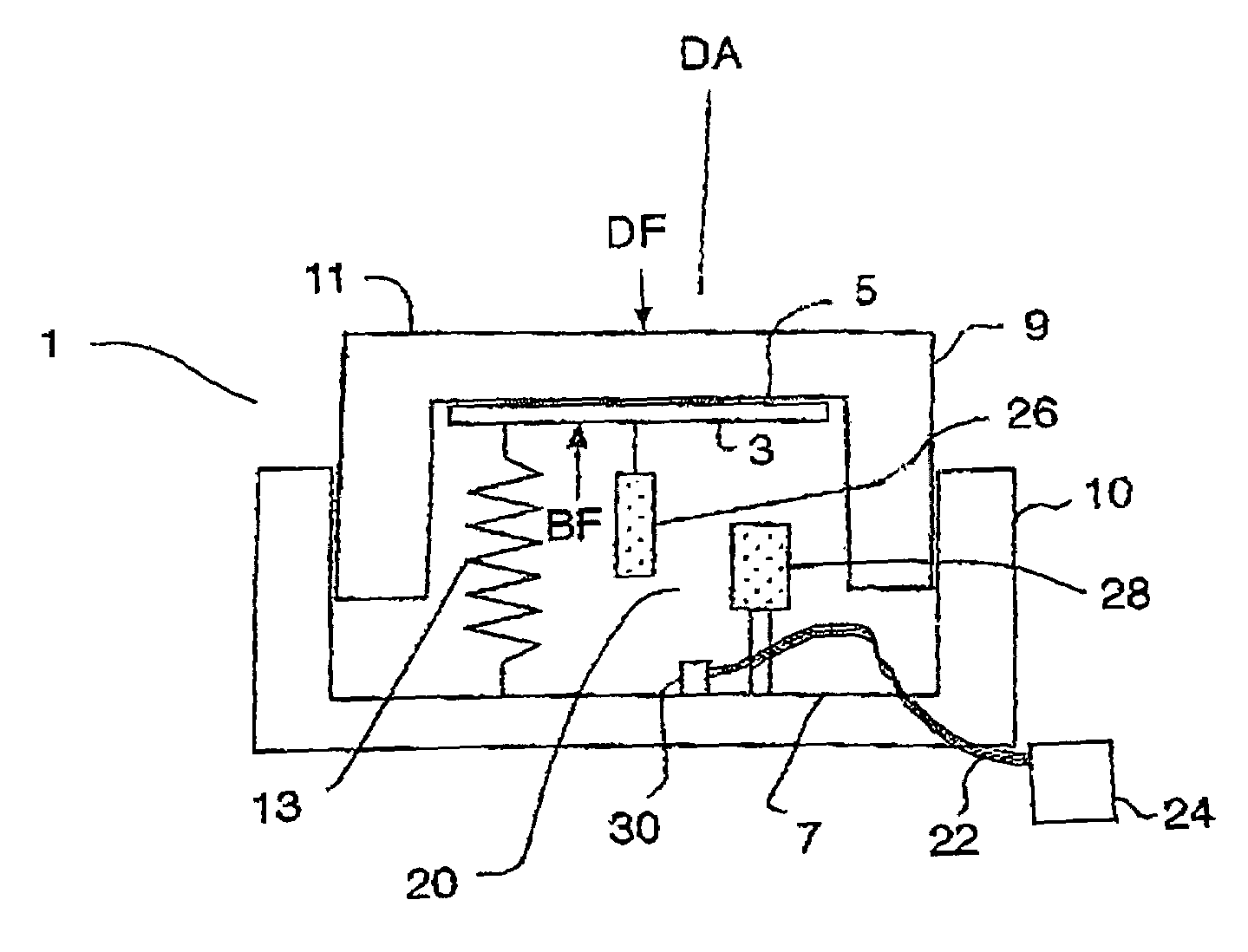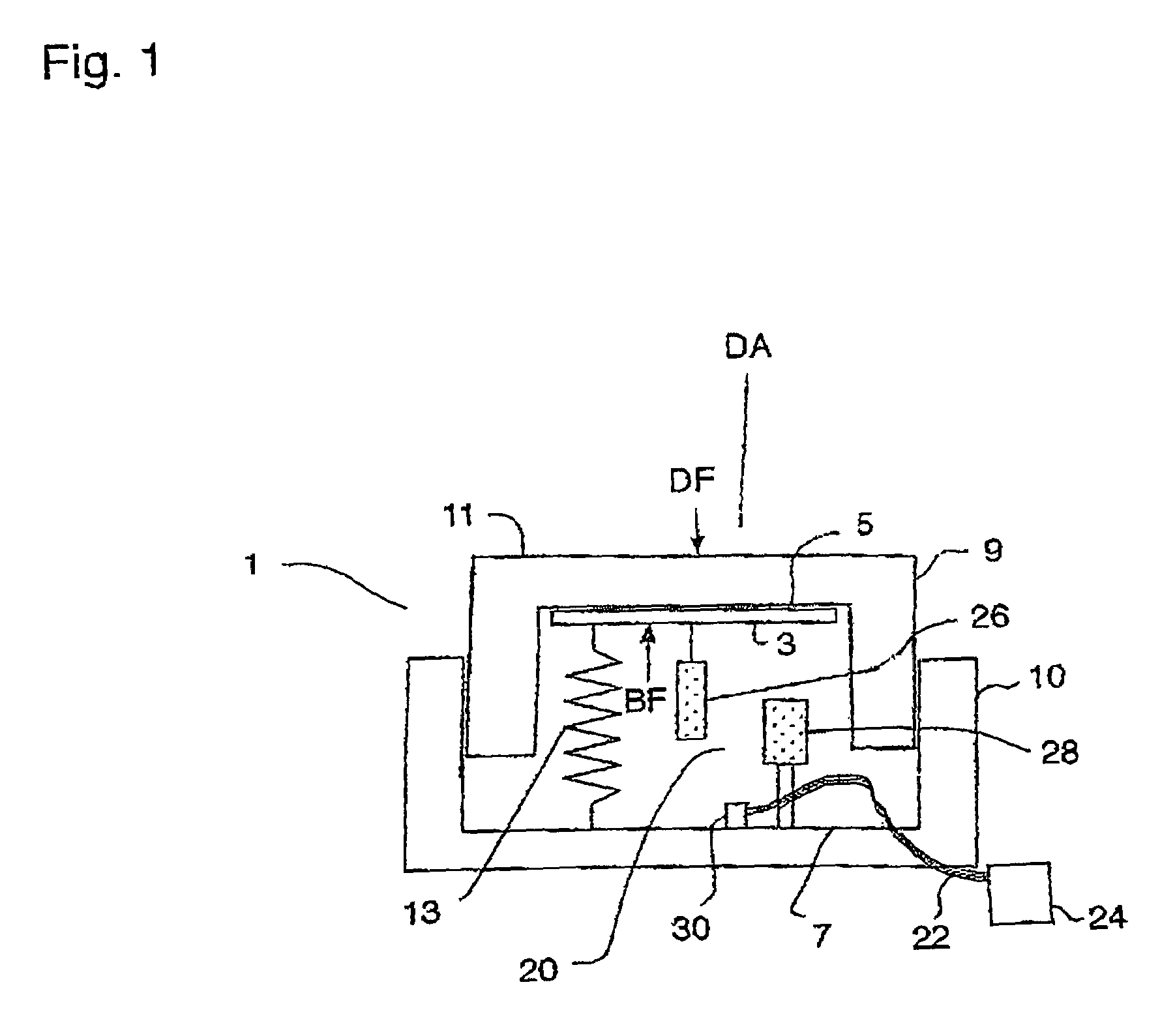Displacement and force sensor
a displacement sensor and displacement technology, applied in the direction of material strength using steady bending force, material strength using steady torsional force, etc., can solve the problems of inability to obtain temporal displacement and force history, soil dynamic characteristics vary with soil composition and depth, and cannot be reliably measured at various depths below the surface of an area of soil, etc., to achieve low cost, sensitive
- Summary
- Abstract
- Description
- Claims
- Application Information
AI Technical Summary
Benefits of technology
Problems solved by technology
Method used
Image
Examples
Embodiment Construction
[0030]FIG. 1 schematically illustrates an apparatus 1 of the invention for measuring the displacement of visco-elastoplastic media, such as soils, below the surface thereof. The apparatus 1 comprises an upper plate 3 having a top surface 5 and mounted in the apparatus 1 such that a displacement force DF exerted on the top surface 5 will move the upper plate 3 a displacement distance downward toward a base 7. To enclose and protect the sensing components, the apparatus 1 includes a casing assembly comprising an upper casing member 9 telescoping with respect to a lower casing member 10. The upper plate 3 is fixed to the upper casing member 9 such that a force DF exerted on the top surface 11 of the upper casing member 9 is directly transferred to the top surface 5 of the upper plate 3 and thus pushes the upper plate downward toward the base 7. In the illustrated embodiment the lower casing member 10 also provides the base 7.
[0031]In addition to enclosing and protecting the sensing com...
PUM
| Property | Measurement | Unit |
|---|---|---|
| displacement | aaaaa | aaaaa |
| force | aaaaa | aaaaa |
| depth | aaaaa | aaaaa |
Abstract
Description
Claims
Application Information
 Login to View More
Login to View More - R&D
- Intellectual Property
- Life Sciences
- Materials
- Tech Scout
- Unparalleled Data Quality
- Higher Quality Content
- 60% Fewer Hallucinations
Browse by: Latest US Patents, China's latest patents, Technical Efficacy Thesaurus, Application Domain, Technology Topic, Popular Technical Reports.
© 2025 PatSnap. All rights reserved.Legal|Privacy policy|Modern Slavery Act Transparency Statement|Sitemap|About US| Contact US: help@patsnap.com



